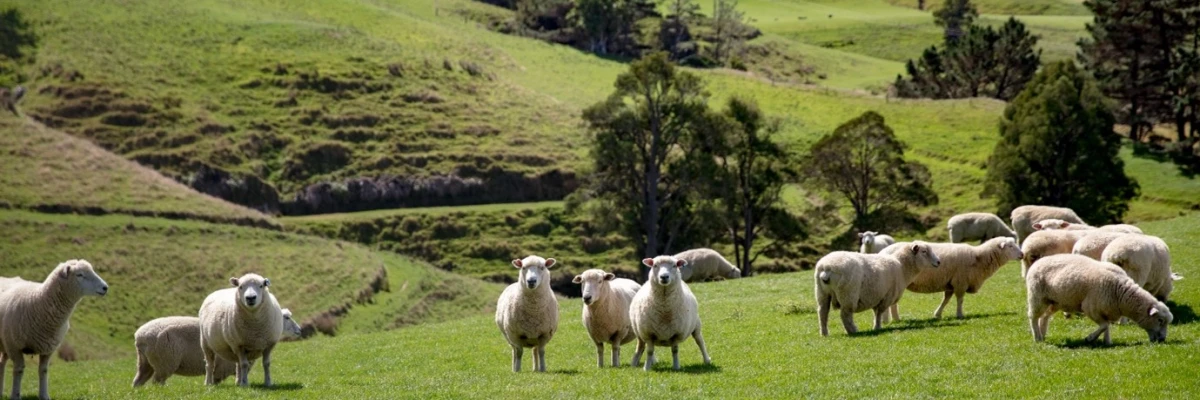
Do you know your responsibilities when businesses come on farm?
Posted on Thursday, 14 November 2024

Are you aware of your health and safety responsibilities when people come on to your farm to carry out a task? This could include vets attending to animals, truck drivers picking up livestock, AB technicians, contractors and service providers, or sales reps visiting your farm.
When staff from another organisation come on farm, it creates a shared workspace where more than one organisation and its workers control and influence how work is done.
This is referred to as “overlapping duties” between persons conducting business or undertakings (also referred to as PCBUs). This could be:
- A farmer or farm business
- A contractor or any organisation coming on farm to conduct business
- A business that is responsible for people working on a farm.
WorkSafe requires each person conducting business to consult, cooperate and coordinate with each other to ensure the safety of the people carrying out the work is managed adequately. This is sensible because each party has a specific health and safety responsibility as well as their own knowledge of the task and the associated risks. It’s also good practice to evaluate the health and safety track record of contractors and service provider before they’re selected to ensure they can carry out the task safely and efficiently.
In practice, there can be room for confusion or where risks slip through the cracks – this should be addressed before joint tasks are carried out. In general, you can’t “contract out” your health and safety responsibilities so it’s important to establish who’s best placed to manage a risk and how it will be managed.
Example:
If a stock truck driver comes onto farm to load up livestock, who’s responsible for ensuring the safety of the driver, the livestock, and the farmer/farm team?
Risks may include:
- Physical injury from livestock
- Climbing up on the truck decks or catwalk
- Low overhead power lines
- Stockyards and ramps in poor repair
- No second person being present during loading or unloading
- Pedestrians in the vicinity of large vehicles
- Any environmental risks (e.g. steep gradients, slippery roads, flooding)
It’s the responsibility of each party to identify the risks and work together to ensure the risks are properly managed to keep people safe. These duties are based on the person’s ability to control the work and prevent harm.
For example, a farmer can control the status of the livestock (full or empty, calm or stirred up) and the standard of the stockyards and a livestock truck driver can control the safest method of loading or unloading livestock. However, the process is a team effort and either party can stop the task if it is unsafe so that a safer way can be worked out.
If a person only has a limited ability to control the work or events leading up to harm, they’re only accountable for what they can reasonably control. If a person can control the work or events, but took no action and harm occurred, they could be held legally responsible.
This applies to people such as vets, farm advisors, and meter readers coming onto a private farm to do work. Their employer needs to make sure the farmer or landowner has made it a safe workspace.
For farmers (or landowners):
- Farmers should make sure any hazards on farm are communicated to others, and note that hazards can change day to day.
- Farmers are responsible for ensuring adequate systems are in place to prevent harm from those hazards.
- Farmers must make sure work carried out as part of the business (at any location on the farm), doesn’t put others at risk. If risks exist from work previously carried out (e.g. spraying of hazardous substances, or trenching), then the farmer would need to reasonably manage these risks for visitors.
For farm visitors:
- People visiting a farm have a responsibility to take reasonable care that their actions (or lack of action) do not put themselves or others at risk. They must also comply with any reasonable instruction given by the farmer, as far as they’re able to.
- Visitors should identify any hazards they see and should expect these are addressed and made safe.
Others:
- Employers or companies that provide or direct work on farms have responsibilities to ensure the contractors they are using will operate safely and satisfy themselves that their employees or contractors will be kept safe while on farm.
- Anyone introducing a hazard to a farm (e.g. a contractor doing some welding or using large machinery) should communicate this with the farmer. They are usually best placed to manage the risk, but it should be agreed on how it will be managed, and who is responsible. This should be documented by way of a standard form (e.g. Safety Plan, Safe Work Method, Job Safety Analysis).
- When work is being carried out, it’s important to check that the work is being done safely and all risks are adequately controlled.
- If you have someone coming onto your farm frequently it is a good idea to have a well-known safety routine.
Don’t assume someone has something under control – ask the question. Make it a priority to make sure everyone gets home safe at the end of the day.
For more information, visit the WorkSafe website.